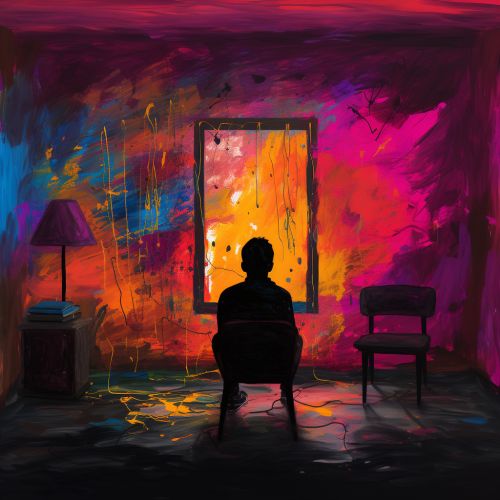Bipolar Disorder
Overview
Bipolar disorder, also known as manic-depressive illness, is a brain disorder that causes unusual shifts in mood, energy, activity levels, and the ability to carry out day-to-day tasks. It is characterized by episodes of mania and depression that can last from days to months.


Symptoms
Bipolar disorder is marked by significant and severe mood swings. A person with this disorder can go from feeling overly joyful and energized (mania) to feeling very sad and hopeless (depression) and then back again, with periods of normal mood in between.
Manic Episode
A manic episode is characterized by a sustained period of abnormally elevated, expansive, or irritable mood and persistently increased activity or energy. Symptoms may include inflated self-esteem, decreased need for sleep, being more talkative than usual, flight of ideas, distractibility, increased goal-directed activity or psychomotor agitation, and excessive involvement in activities with a high potential for painful consequences.
Depressive Episode
A depressive episode is characterized by a sustained period of intense sadness or a significant decrease in interest or pleasure in most activities. Symptoms may include feelings of worthlessness or excessive guilt, diminished ability to think or concentrate, recurrent thoughts of death or suicidal ideation, significant weight loss or gain, insomnia or hypersomnia, psychomotor agitation or retardation.
Causes
The exact cause of bipolar disorder is unknown, but it involves several factors that work together to produce the illness. These factors include genetics, brain structure and function, and the environment.
Genetics
Bipolar disorder has a strong genetic component. It is more common in people who have a first-degree relative, such as a sibling or parent, with the condition. Researchers are trying to find genes that may be involved in causing bipolar disorder.
Brain Structure and Function
Brain scans cannot diagnose bipolar disorder, yet researchers have identified subtle differences in the average size or activation of some brain structures in people with bipolar disorder.
Environment
Environmental factors may also contribute to bipolar disorder. These factors may include extreme stress, physical or sexual abuse, significant loss, or other traumatic experiences.
Diagnosis
Diagnosis of bipolar disorder involves a careful and thorough assessment by a trained mental health professional, often including a psychiatric evaluation. The evaluation may include a physical exam, an interview, lab tests, and a mental health assessment.
Treatment
While bipolar disorder is a lifelong condition, it can be managed effectively with a combination of medication and psychotherapy.
Medication
Medications for bipolar disorder are usually prescribed by a psychiatrist and may include mood stabilizers, antipsychotics, antidepressants, and anti-anxiety drugs.
Psychotherapy
Psychotherapy, or "talk" therapy, is an important part of treatment for bipolar disorder. Types of therapy may include cognitive-behavioral therapy, family-focused therapy, and group therapy.
Prognosis
With proper treatment and management, individuals with bipolar disorder can lead fulfilling and productive lives. However, it is a long-term illness that will require ongoing management.
